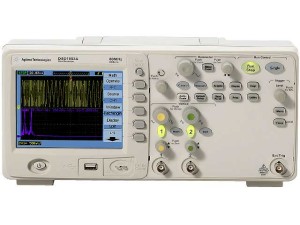Analog vs Digital
Shop For Analog Digital Oscilloscopes

The focus of this article is on Digital Storage Oscilloscopes (DSOs) as they represent the majority of new oscilloscopes purchased today. Before describing what to look for in an digital oscilloscope, it is necessary to begin by at least touching on analog.
Most electronics engineers will have used an analog scope at some time and will be familiar with its layout and operation. In fact, many people purchasing oscilloscopes today are replacing analog with digital.
Although there are still some engineers who love the look–and–feel (let alone the warmth) of analog scopes, they have few, if any, features that cannot be surpassed by a DSO.
If you are still tempted by an analog scope you will find your choice limited. Only a few manufacturers still make analog scopes; some of the models still on sale are based on rather old technology and often have very limited performance.
Buying a second hand analog scope may initially seem like good economic sense but, before doing so, check for the availability of spares, as high repair costs can make the purchase a false economy.
There are other criteria that have added weight to the analogue vs digital debate. DSOs:
- Are small and portable
- Have the highest bandwidths
- Have single shot ability
- Have colour displays
- Provide on–screen measurements
- Have simple user interface
- Provide storage and printing
Modern DSOs, with their PC connectivity, can also be fully integrated into Automatic Test Equipment (ATE) systems. In addition, the DSO is often used as the front–end of a high speed data acquisition system, making the cost per channel much more economically viable.
